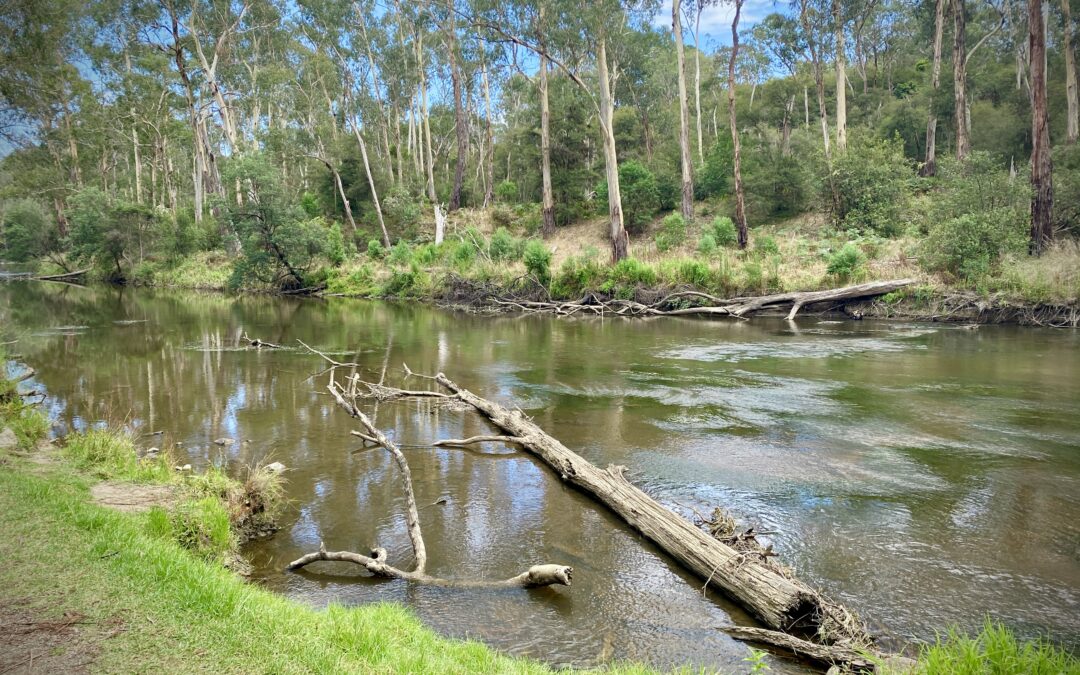I grew up in a semi rural community, before social media, mobile phones or even the internet.
After school was spent in the street playing games with the other local kids. Week-long cricket matches with the scores kept on the road, written in chalk. When the street lights came on, play was halted for the day.
On the weekends. I would get on my push bike and ride for an hour to get to the river. Sometimes I was with a friend, but often I went by myself.
The eucalypts towered by the river bank. The water flowed over the rocks with calming music. Foam would swirl on the surface. And I would explore.
Every rock pool was a new world of plants and bugs and swimming things.
And being a bit on the nerdy side, I would collect water and pond scum samples in jars and take them home to look under the microscope.
Spending time in nature was what I did as a child. It was my happy place.
Thirty years later I was visiting Puffing Billy, a steam train tourist attraction in the mountains not far form where I live now. Life had become very ‘adulty’ and my time and energy was consumed with parenting and work.
As the train crawled it’s way through the soaring Mountain Ash trees, I found myself holding my two sons and feeling a longing. A deep desire to reconnect with nature, and to show my sons the adventures that I had experienced as a child.
Six months later, my two sons and I headed off for the first of what became an annual get away hiking in our favourite mountain range. It became known as our mid year reset.
Why is nature good for a HSP?
The highly sensitive person has a super-charged central nervous system, meaning that whatever the environment around us has to offer – in terms of emotional, energetic or sensory input – is magnified.
Natural disasters like floods and bushfires aside, nature is generally a peaceful place. So when the HSP spends time in nature, the peace is magnified.
From the science behind Forest Therapy, we also know that time in nature reduces our cortisol (stress hormone) levels, meaning we feel less stressed, can think more clearly, and regulate our emotions more easily.
The practice of Shinrin Yoku, or forest bathing, is custom made for the HSP as it promotes time in nature for enhanced health and wellbeing. It has become so effective that in some parts of the world, notably Asia and Europe, time in nature is being prescribed by medical professionals for a range of presenting issues.
How to use nature as a resource
Fortunately, to obtain the benefits of nature the HSP doesn’t have to ‘do’ anything. It’s not about hiking a certain distance, achieving a certain speed, or reaching a certain number of steps.
The only thing required is to slow down and be open to receive what nature has to offer.
What colours can you see?
What sounds can you hear?
What textures can you feel?
What aromas can you smell?
(We generally don’t encourage anybody to taste anything in nature. Just in case!)
Slowing ourselves down and tuning ourselves in means we are open to receive the gifts nature has for us.
A nature prescription
Recent studies have suggested that two hours a week is what we need to get the minimum health benefits. But even 20 minutes in nature is enough to start to reduce stress levels and enhance wellbeing.
Incorporating a walk in the park during our lunch break, or having our morning coffee in the back yard, will all help nature keep us healthier and happier.
For families, walk to the playground, kick the ball in the park, visit the river and explore. Spend as much screen-free time in nature as you can. In both the short and long term, your children will benefit.
Full Circle
My sons are adults now, and live happy and independent lives.
When they turned 18, both of them asked to have a party with some of their mates.
For both of them, two years apart, the request was not a visit to the movies or a games centre. They didn’t want to go bowling or to laser tag.
They asked to have a gathering by the river. Swinging off the rope swing, swimming, basking, celebrating with the trees.
I loved seeing them have so much fun with their friends.
And part of me looked for a jar to collect some water to take home.
– Matt.
References (Accessed 2/2/25)
https://www.nature.com/articles/s41598-019-44097-3
https://www.health.harvard.edu/blog/can-forest-therapy-enhance-health-and-well-being-2020052919948

